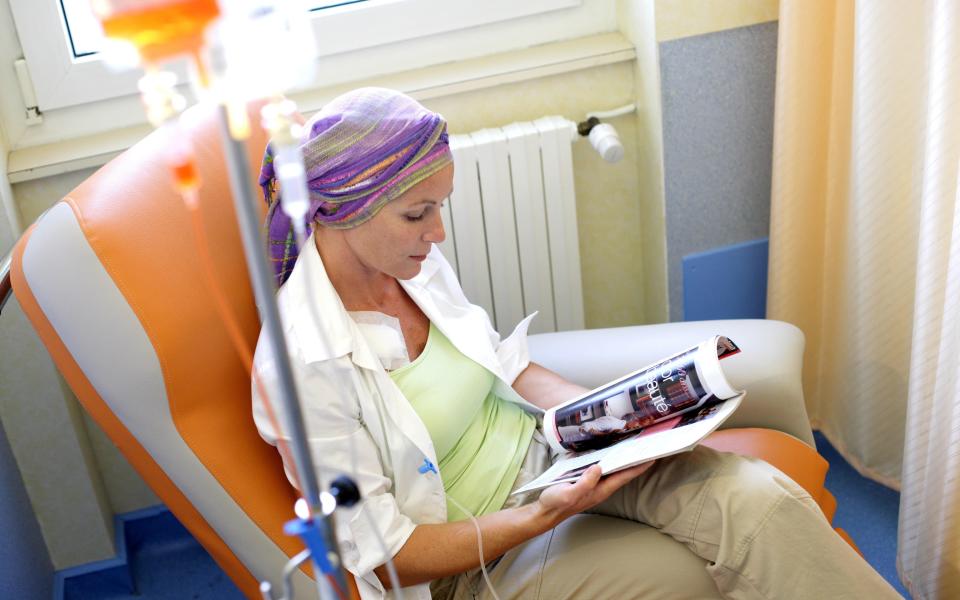How NHS and hospice teamwork can make end-of-life care as easy and painless as possible
Last Saturday we marked World Cancer Day with its focus on funding for research. Ten UK charities – Cancer Research UK, Anthony Nolan, Breast Cancer Now, Breast Cancer Care, Marie Curie, Movember Foundation, Bowel Cancer UK, Children’s Cancer and Leukaemia Group, CLIC Sargent and The Royal Marsden charity.
Of the 250,000 people who die in hospital every year, many would have much preferred to die at home
The theme was an Act of Unity, symbolised by a Unity Band worn round the wrist. The bands – which differed for each charity - were made of two parts, knotted together, ‘to represent strength in unity and the power of what can be achieved when people join forces’.
Two other patient-centred charities Hospice UK and Hope for Tomorrow are proving the importance of joint ventures – this time with the NHS.
Previous research by Hospice UK has shown that, of the 250,000 people who die in hospital every year, many would have much preferred to die at home. In answer to a question on the BBC Today Programme, Tracey Bleakley, CEO of Hospice UK, said: “I believe that we can get 50,000 people at the end of life out of hospital. End-of-life is not a particularly medical process. It can be managed by nurses; it can be supported in the home and we know that 80 per cent of people want to die at home – and we want to help many more people do that.”
Understanding what people want and building a relationship with them, as soon as an illness is diagnosed as terminal, allows hospice care to be taken to the patient’s home, even if that is a care home or sheltered accommodation – away from the noise and bustle of a hospital ward.
Hope for Tomorrow has made an immeasurable difference to the lives of thousands of people – and not only spared them the un-needed stress, but lessened the chances of infection caught on the journey or in the hospital
The success of Hospice at Home care has persuaded NHS England to fund the first stage of a new project by Hospice UK to evaluate yet more of the initiatives led by hospices. It will identify how hospice-led services can help to offer more choice to people over where they die.
This would lead to a better end-of-life experience for people with life-limiting conditions and would free up hospitals to be more effective and treat the people that they need to treat – thus, too, sparing vulnerable patients at the end of life from hospital-bred infections.
While there are a few NHS Hospices in the UK, the great majority rely on charitable donations to fund their work. They need to raise £1 billion annually and to this amount the NHS contributes a mere £300,000.
Hope for Tomorrow was founded in 2003 by Christine Mills in memory of her husband, David, who died of cancer. The charity provides Mobile Cancer Units (MCUs) which bring chemotherapy closer to patients. Christine had watched her husband endure the stress of travelling long distances to the cancer centre, battling with the frustrations of hospital car parking (which is an on-going problem, despite Macmillan’s greatest efforts to ensure it is free for cancer patients) and then waiting in uncongenial surroundings for treatment.
She approached Dr Sean Elyan, consultant oncologist and medical director of Gloucestershire Hospitals NHS Foundation Trust, who was also greatly concerned at how many hours a week his patients were having to travel for chemotherapy. Together, they came up with the idea of reversing the model and taking chemotherapy to the patients – particularly in rural areas.
There is no doubt that the most innovative ideas come from the charities, the nurses and doctors. They beat all those NHS ‘think-tanks’ – on which vast amounts of our tax pounds are spent – hands-down
In February 2007 the first MCU – christened Helen - was launched. In the intervening 10 years, nurses have administered 10,000 treatments and saved patients 50,000 hours and 700,000 miles of travel. On 20th of this month that Unit will be replaced by Helen Mark 2.
To date there are ten operational MCUs – with another held in reserve and a twelfth in the pipeline. Each Unit costs £260,000 to build and launch, together with a Nurses Support Vehicle (NSV) which carries not only the nurses but any additional supplies or equipment needed – plus the cost of maintenance for the vehicles.
Hope for Tomorrow retains ownership of each MCU, taxes each one and provides the standard equipment inside the Unit. This includes medical grade vinyl floor covering, the special chairs, a microwave, work bench, chemo pump stands (in the new MCU these have been designed off the floor to provide more room), a medical grade and a normal fridge. Tea, coffee and biscuits are donated by volunteers and the NHS provides the bottles of water.
Each Unit – which is wi-fi enabled and carries a 4G box for more remote areas - can visit up to 5 locations each week and treat 12-18 patients each day. This map shows ‘Where the Units Go’.
The NHS provides the chemotherapy drugs and non-standard equipment, the nurses, a qualified HGV driver plus a back-up, fuel, electricity, parking charges and insurance for the Unit and the NSV.
Hope for Tomorrow has made an immeasurable difference to the lives of thousands of people – and not only spared them the un-needed stress, but lessened the chances of infection caught on the journey or in the hospital.
‘Joining forces’ must be the way forward but there is no doubt that the most innovative ideas come from the charities, the nurses and doctors. They beat all those NHS ‘think-tanks’ – on which vast amounts of our tax pounds are spent – hands-down.


